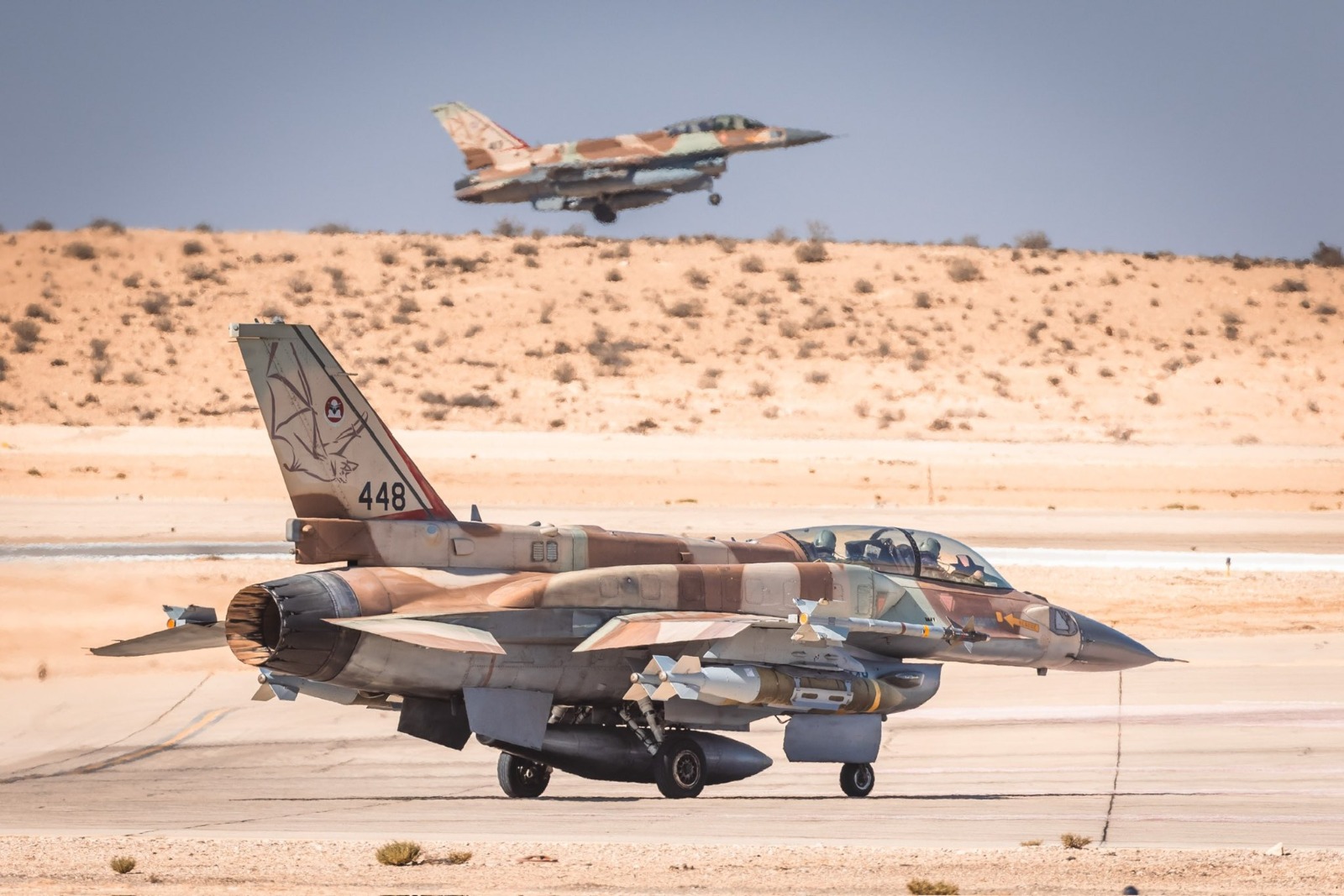OPED By: Gp Capt TP Srivastava
“Decision to retaliate against Iran is a political necessity rather than a strategic military requirement to ensure the survival of Benjamin Netanyahu.”
Israel struck the Iranian consulate in Damascus on 1st April 2024, killing top officials. Iran retaliated by launching a massive barrage of ballistic missiles and drones on 13th April 2024. The world waited with bated breath about the Israeli response. Israel’s most trusted ally USA, had this to say;
Statements made by POTUS in the last few days after Iran launched a direct attack on Israel using Missiles and Drones;
“We will support Israel.”
“USA will not help Israel if Israel retaliates against Iran.”
“The Biden administration said the United States would not participate in any Israeli reprisal.”
In the latest reports, it appears that Israel may have finally attacked Iran.
Iranian FARS news reported multiple blasts near the military base where fighter jets are located in the northwest part of the city of Isfahan. It has been said that the army radar was one of the possible targets, and the windows of several office buildings were broken in this area, FARS reports.
Isfahan is considered a strategically significant city and is home to various critical sites, including military research and development sites. The nearby city of Natanz is the location of one of Iran’s nuclear enrichment sites.
Iran-Israel Tensions: Earlier Analysis
But POTUS never told Israel explicitly that “you (Israel) will not attack Iran.”
For reference and records, the new arms packages, which have been delivered to Israel, include more than 1,800 MK-84 2,000lb bombs and 500 MK-82 500lb bombs, said the sources, who confirmed a report in the Washington Post. Washington gives $3.8bn in annual military assistance to Israel, its longtime ally.
According to his office, Netanyahu thanked Israel’s allies for their “support in words and support in actions.” But he added, “I want to make it clear—we will make our own decisions.”
The Israeli war cabinet has been in the huddle since Iran’s strike. Former Army Chief Benny Gantz is believed to have clearly opined that Israel must retaliate or else it might face an existential threat. The media has been buzzing with Israeli options in the event of Israel choosing to retaliate. Some of these are;
1. Indirect attack on Iran by attacking Revolutionary Guard bases located in Syria, etc.
2. Continue with Israel’s reasonably successful option of assassinations of prominent Iranians.
3. In order to prove personal credibility Netanyahu might opt for striking targets within Iran in spite of US advice. The US has merely said it will not support Israel in carrying out the attack.
4. Soft kill option viz cyber attack is also a probability.
Strategists had conveniently avoided mention of the following options: Mention of an attack on Iran’s nuclear targets is absent, not by coincidence but by choice, and is conspicuous by its absence.
1. Will Israel use Iran’s direct assault as an excuse to strike Iran’s nuclear facilities at Fordow and Natanz?
2. Will Israel be ready to exercise nuclear options should the war escalate and threaten Israel’s existence?
Fordow Facility
It is located near the city of Qom. Two units, one Northeast and the other northwest of Qom, embedded into mountains, were photographed by satellite and made available on the Internet by the Institute for Science and International Security (ISIS). The tunnel entrances of both plants are clearly visible and vulnerable to strike from the air, both by cruise missiles and aircraft.
One of the pictures clearly indicates a flat area on top of the hill close to tunnel entrances, which might be used as a helipad. It is extremely probable that there might be a vertical shaft housing an elevator.
Natanz Facility
The Natanz facility has overground and underground structures. After the failure of JCPOA talks with the Biden administration, it is believed that Iran has shifted vulnerable parts of the Uranium enrichment plant underground. This facility is believed to be 80 to 100 meters below ground.
The latest Natanz imagery interpreted by the James Martin Centre for Non-proliferation has revealed four clearly visible entrances (as against two in Qom), two each to the east and west.
Iran’s Present Holding of Enriched Uranium
According to IAEA directions, Iran was allowed to enrich Uranium to 3.67% purity, which is adequate to power civil nuclear power stations. The stockpile limit imposed was 300 kg or less. However, Iran is believed to have enriched Uranium up to 83.7%, a whisker short of the 90% needed for nuclear weapons.
Attack Profile
Both these sites are heavily defended by various types of air defense weapons. Attack on Iran’s nuclear facility will be an extremely high attrition mission for Israel.
Surely, Israel realizes the risks. But to challenge/face an existential threat, Israel will have to bite the bullet. In view of the nuclear structures embedded under mountains, chances of success of hitting those directly are, at best, remote in spite of the most potent penetration bombs provided by the USA to Israel.

However, carrying out KAMIKAZE type of attacks on multiple entrances to these establishments by fully loaded F-15EXs and even C-130s filled with large numbers of bombs flying into the openings is a possibility.
In fact, a closer interpretation of satellite imagery clearly indicates a probable expanse of the underground facility, thus helping direct strike by bunker-busting bombs.
Simultaneous attacks on all entrances, along with precisely aimed bunker-busting bombs, will/may result in sufficient damage to both facilities. Successful attacks on all entrances are possible with pin-point accuracy by manned aircraft. By destroying/damaging all entrances, Israel will ensure that facilities cannot be used in a hurry.

Conclusion
Iran did not retaliate in this manner after Qasim Suleimani was killed. However, in this instance, Iran has responded by carrying out an attack directly on targets in mainland Israel.
It is of little or no consequence as to what damage, if any, was caused to Israeli infrastructure, military or civil. The significance of the attack is indicative of a probable existential threat to Israel. Also, being attacked is a sign that you are important enough to be a target.
Israel does not believe in the concept of ‘sparrow nesting’; hence, retaliation/offensive action is its first choice. The 1967 six-day war is a perfect example of Israel’s mindset.
Also, Israel no longer believes that it needs a US hand to protect it. It is a self reliant nation militarily as well as intent. It does not believe in adopting conventional methods.
A symbolic strike by Israel on peripheral targets will be of little or no strategic value. Israel realizes that and may grab the opportunity to strike Iran’s critical facilities. With nuclear weapons in its basket ready for use, Israel was, in all likelihood, likely to retaliate sooner than later.
- Gp Cpt TP Srivastava (Retd) is an ex-NDA who flew MiG-21 and 29. He is a qualified flying instructor. He commanded the MiG-21 squadron. He is a directing staff at DSSC Wellington and chief instructor at the College of Air Warfare.
- VIEWS PERSONAL OF THE AUTHOR
- Follow EurAsian Times on Google News




